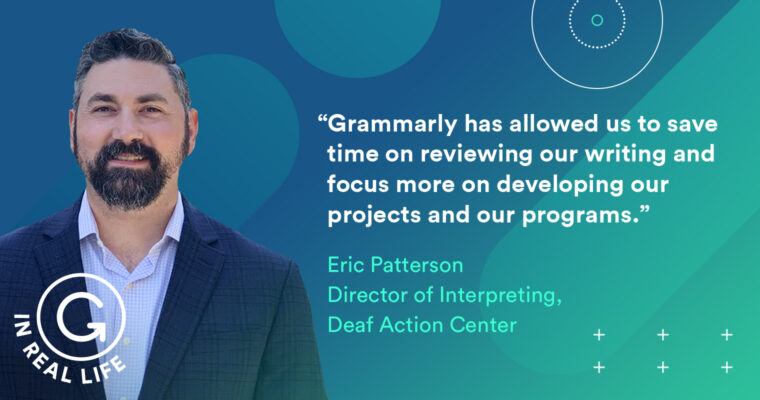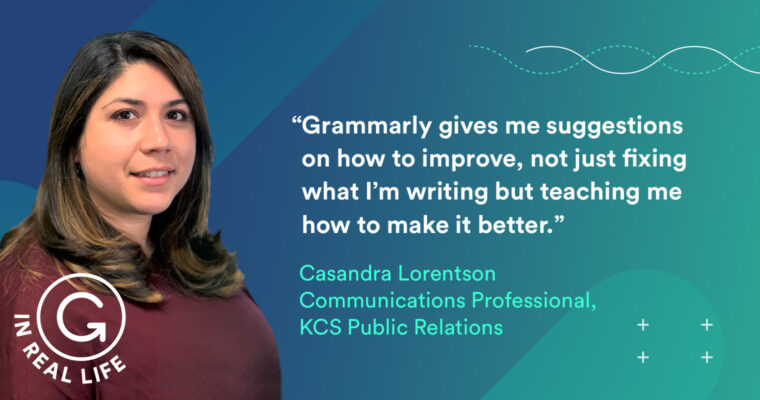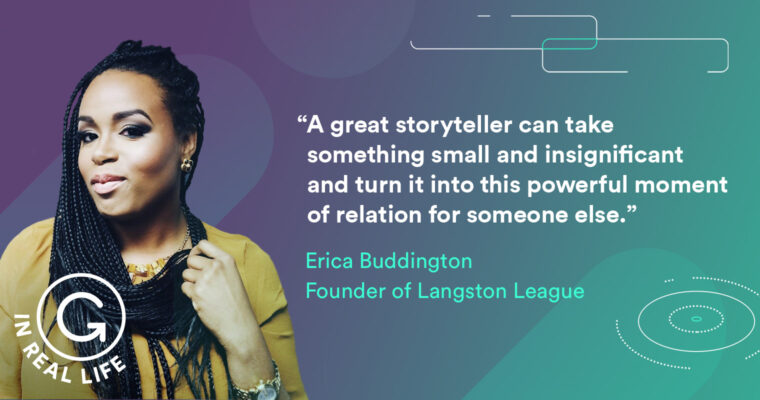
Eric Patterson’s path toward improving communication for the deaf and hard of hearing community started early.
Through his childhood in rural Texas, Patterson was mainstreamed—meaning he attended schools with hearing students and teachers—and felt stifled in his ability to engage fully with people around him. They were not fluent in his most comfortable mode of expression: sign language.
“Whenever I had issues and struggles, I wanted to express them but wasn’t able to because there wasn’t anyone who was proficient enough to understand me and communicate with me,” he recalls. “A lot of my interactions happened in condensed formats with abbreviated information.”
With these experiences in mind, he sought out opportunities after college for helping others like him—so they didn’t encounter the same barriers.
That search led him to Deaf Action Center, a Dallas-based nonprofit that has since 1977 supported the Texas deaf community by advancing opportunities in health, education, and economic security. DAC programs range from a senior citizen meal service to a coaching service for deaf students on finding employment after graduation.
Patterson worked first as an advocate then transitioned into the interpreting department, which he now directs. Along the way, he became a certified deaf translator. When businesses need to provide an interpreter for a deaf individual—as required by the American Disabilities Act—they can contact DAC, and an interpreter from Patterson’s team will step in to offer their services.
But to coordinate this work of sign language interpretation, he needs to use a different form of communication entirely: written English language. And for Patterson, as for many deaf professionals, that’s not always as simple or straightforward as hearing people might assume.
Deaf professionals and the English language
“English and the linguistics behind it—the grammar of the language—is very easily adopted by hearing children and hearing people because it’s implicitly learned,” Patterson explains. “Children grow up hearing their parents having conversations in English, and they develop an understanding of the language itself incidentally.”
While backgrounds vary greatly in the deaf community, it’s often the case these opportunities to learn implicitly are not available for deaf children: “We miss out on that experience and are forced to learn the English language explicitly, through textbooks and lessons.”
Patterson, who became deaf after contracting meningitis at the age of two, was raised in a household with some significant exposure to the English language from his parents. But even so, he—like many deaf people in the English-speaking world—does not consider it to be his native language. That’s American Sign Language, or ASL.
“ASL is not linear and does not have a written form. Instead, we use space as our structure. It’s a visual language,” Patterson says. This means that when he and his deaf colleagues need to communicate in linear, written English, they do not always have the same fluency as hearing people. “That’s why deaf people typically write at a lower grade level when using English.”
Because of this, Patterson and his deaf colleagues at DAC often do lots of extra work when writing. “We are constantly focusing on making sure our English is perfect so that our hearing colleagues and the businesses that we partner with see us as equals and see us as professional and competent,” he says. “That takes a lot of adjustments and manipulation on our side to review our language. We’re constantly wondering whether they’re checking our language and whether it sounds alright—whether they’re criticizing it. Is it up to par?”
He began looking for better ways to manage this work. And that’s when he found Grammarly. The writing assistant helps him write “flowing, fluent English sentences.”
“Grammarly has allowed us to save time on reviewing our writing and focus more on developing our projects and our programs,” Patterson says. “It helps us be more competitive in work and focus more of our time on developing projects and ideas.”
He and others at DAC use Grammarly’s writing assistant to make sure their email communications with clients and businesses are clear and professional. The product also supports them in all manner of content—from social media channels to blog posts hosted on the organization’s site.
And as the quality rises, so does the quantity, says Patterson: “With Grammarly, I’m able to push more written content outside of the organization that can educate others and inform them about the services that we offer.”
Signing—and connecting—at a distance
Things have gotten a little more complicated for DAC during the pandemic. Sign communication requires people to see one another, and that’s not easy to do while social distancing. The organization is getting creative about solutions—finding ways to “communicate face-to-face at a distance.”
But there’s a silver lining amid the difficult situation, says Patterson: a rise in awareness about certified deaf interpreters.
In times of crisis, when there are important announcements that require widespread understanding—such as official announcements related to COVID-19—it’s likely that broadcasters will use a deaf interpreter to sign on screen for the deaf community.
Why employ deaf interpreters instead of someone who can hear spoken English and simultaneously translate into ASL?
“They often tend to veer back to their native English and English structure because of the stress of the situation,” says Patterson.
An on-screen deaf interpreter who is native with sign language won’t have that tendency. “During those emergency announcements and broadcasts, a deaf interpreter is going to continue to stay at that native visual level for longer throughout the announcement.” More deaf people watching will understand more crucial information without having to code-switch back and forth with English.
It means there’s more awareness for the needs of the deaf community—and that gives Patterson hope. “This is the first time I’ve seen so many deaf interpreters on television,” he says, “and I love it.”
Catch up on Grammarly’s “In Real Life” series:
How Rhonesha Byng Empowers Women to Run the World
How Casandra Lorentson Found Her Voice to Elevate Others
How Alex Berger Writes His Way Around the World
How Jeanette Stock Empowers the LGBTQIA+ Tech Community
How Matt Halfhill Made Kicks Nice to Write About






